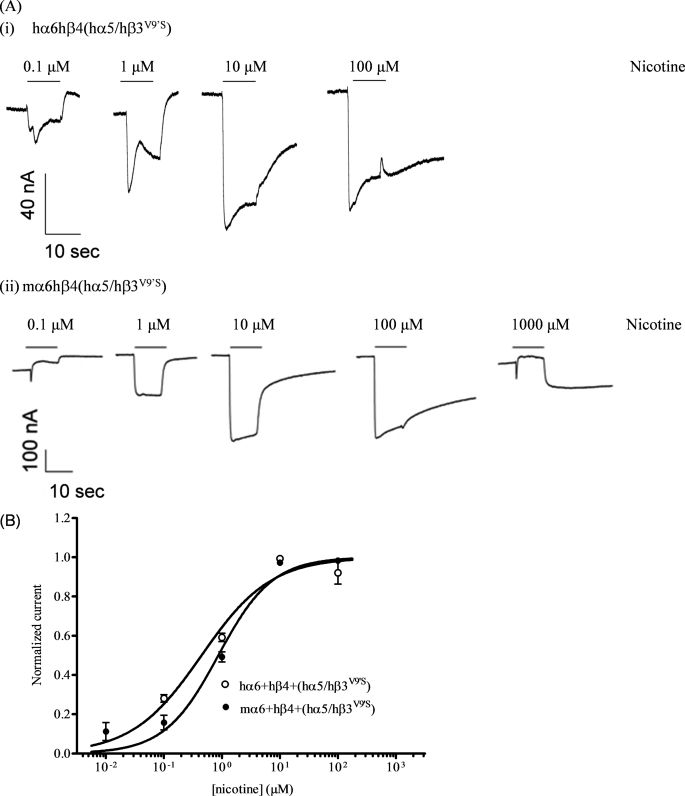FIGURE 2.
Functional properties of α6β4*-nAChR. A, representative traces are shown for inward currents in oocytes held at −70 mV, responding to application at the indicated concentrations of nicotine (shown with the duration of drug exposure as black bars above the traces), and expressing (i) nAChR hα6, hβ4, and hα5/hβ3V9′S subunits or (ii) nAChR mα6, hβ4, and hα5/hβ3V9′S subunits. Calibration bars are for (i) 40 or (ii) 100 nA currents (vertical) or 10 s (horizontal). Note the differences in inward current kinetics. B, results for these and other studies averaged across experiments were used to produce concentration-response curves (ordinate, mean normalized current ± S.E.; abscissa, ligand concentration in log μm) for inward current responses to nicotine as indicated, where current amplitudes are represented as a fraction of the peak inward current amplitude in response to the most efficacious concentration of nicotine (hα6hβ4(hα5/hβ3V9′S)-nAChR, ◊; mα6hβ4(α5/β3V9′S)-nAChR, ♦). Much higher levels of evoked currents are evident for functional nAChR containing hα5/hβ3V9′S subunits compared with receptors lacking or also containing altered forms of wild-type or chimeric α5 subunits, none of which gave substantial or consistent currents responses (not shown; p < 0.0001). See Table 2 for parameters.

